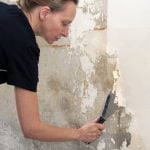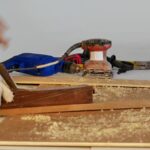Nursing home reform is a critical issue that demands our attention. In this introductory section, we will delve into the importance of nursing home reform, its impact on residents’ quality of life, and shed light on the challenges and shortcomings in the existing system. By understanding the significance of this issue, we can work towards finding solutions to improve nursing homes for the betterment of our vulnerable seniors.
The need for nursing home reform cannot be overstated. For many elderly individuals, nursing homes become their new homes, providing them with essential care and support. However, numerous reports highlight systemic issues that compromise the well-being and safety of residents. Neglect, inadequate staffing levels, lack of training, elder abuse – these are just some of the challenges that plague many nursing home facilities.
This article aims to bring attention to these critical concerns while exploring potential solutions for improvement. By striving for better nursing home reform, we can ensure that residents receive the quality care they deserve in environments that prioritize their health and happiness.
Join us as we delve into legislative efforts, staffing and training enhancements, oversight and accountability measures, resident-centered care approaches, family involvement strategies, addressing elder abuse issues effectively leveraging technology and advocating for sustainable change in nursing home reform. Together, let’s work towards creating a brighter future for those residing in long-term care facilities.
The Role of Legislation in Nursing Home Reform
Legislation plays a crucial role in driving nursing home reform and ensuring the well-being of residents. The legal framework governing nursing homes provides the foundation for establishing standards of care, promoting transparency and accountability, and protecting the rights of residents. Continuous updates to legislation are necessary to address the evolving needs and challenges within nursing homes. In recent years, there have been notable legislative efforts aimed at enhancing nursing home facilities and care.
One important aspect of legislation is setting comprehensive guidelines for staffing levels and training requirements in nursing homes. Adequate staffing levels have a direct impact on the quality of care provided to residents. Insufficient staffing can lead to neglect, medication errors, delayed response times, and compromised resident safety. Therefore, it is essential that legislation recognizes the importance of maintaining appropriate nurse-to-resident ratios and ensures that these ratios are consistently met.
Moreover, legislation should prioritize ongoing education and comprehensive training programs for nursing home staff members. By equipping staff with the knowledge and skills needed to provide high-quality care, legislation can help create a culture of excellence within nursing homes. Training programs should cover topics such as person-centered care, effective communication strategies, recognizing signs of abuse or neglect, infection control measures, and managing challenging behaviors among residents.
To further bolster nursing home reform efforts through legislation, it is critical to establish strong oversight and accountability measures. Existing oversight mechanisms should be regularly evaluated to identify potential gaps in monitoring nursing home facilities. This can be achieved through increased inspections by regulatory bodies, unannounced visits to ensure compliance with regulations, and more rigorous enforcement actions against non-compliant facilities.
Transparency is another crucial aspect of oversight. Legislation should require nursing homes to regularly report data on key quality indicators such as staffing levels, incidents of abuse or neglect, resident satisfaction surveys, and overall performance metrics. Making this information available to the public empowers families to make informed decisions about which facility will provide the best care for their loved ones.
Enhancing Staffing and Training to Foster Better Care
Staffing levels and the quality of care in nursing homes are closely interconnected. Adequate staffing is essential for providing a high standard of care to residents. Insufficient staffing can lead to neglect, inadequate supervision, and rushed or incomplete tasks, which may compromise residents’ safety and well-being. Therefore, enhancing staffing and providing comprehensive training programs are crucial steps towards improving nursing home reform.
The Correlation between Staffing Levels and Quality of Care
Research has consistently shown that higher staffing levels in nursing homes are associated with better outcomes for residents. Studies have found that facilities with lower nurse-to-resident ratios have higher rates of adverse events, such as falls, infections, and medication errors. On the other hand, nursing homes with adequate staffing have been linked to improved resident mobility, decreased hospitalizations, and better overall quality of life.
However, many nursing homes face challenges in recruiting and retaining qualified staff due to limited resources and low wages. This shortage can negatively impact the quality of care provided to residents. To address this issue, it is crucial to invest in strategies that attract and retain skilled nurses and caregivers in the field of long-term care.
Comprehensive Training Programs and Ongoing Education
In addition to proper staffing levels, ongoing training and education are vital components of effective nursing home reform. Comprehensive training programs can equip nursing home staff with essential skills and knowledge needed to provide high-quality care. These programs should cover topics such as geriatric care practices, effective communication techniques with older adults, person-centered care approaches, infection control protocols, recognition of signs of abuse or neglect, and the importance of promoting residents’ autonomy.
Continuing education opportunities should also be made available for all staff members working in nursing homes. Regular training sessions can help keep them updated on best practices in elder care, new research findings, advancements in medical technology relevant to their work setting. Moreover licensing boards or governing bodies should require a minimum number of hours of continuing education for staff members to maintain their certifications or licenses.
By prioritizing the enhancement of staffing levels and creating comprehensive training programs, nursing homes can foster an environment that promotes better care for all residents. It is essential for legislation and regulatory bodies to allocate resources and implement policies that ensure adequate staffing and ongoing education within nursing home facilities.
Strengthening Oversight and Accountability Measures
Nursing home reform requires effective oversight and accountability measures to ensure that facilities are providing the highest level of care to their residents. While there are existing oversight mechanisms in place, there may be potential gaps that need to be addressed to enhance transparency, accountability, and enforcement of regulations.
Existing oversight mechanisms often include regular inspections and audits conducted by state or federal agencies. These inspections typically assess various areas of a nursing home facility, such as the quality of care provided, staff training and qualifications, medication management, infection control practices, and resident safety policies. However, it is crucial to continuously evaluate the effectiveness of these oversight measures and identify any shortcomings that may hinder their ability to identify issues within nursing homes.
One strategy for strengthening oversight is to invest in additional resources for regulatory agencies responsible for monitoring nursing homes. This includes hiring more inspectors and auditors who can conduct thorough inspections more frequently. By increasing the number of on-site visits and evaluations, regulators can identify deficiencies sooner and hold facilities accountable when necessary. Additionally, providing adequate funding for regulatory agencies can help ensure that they have access to the tools and technology needed to investigate complaints effectively.
Another aspect of enhancing accountability is implementing stronger enforcement mechanisms for nursing home regulations violations. When deficiencies are identified during inspections or audits, it is important that there are consequences for non-compliance. This can include imposing fines or penalties on facilities that fail to meet standards consistently or have repeated violations. Additionally, public disclosure of inspection results can serve as a powerful motivator for facilities to maintain high-quality care standards.
Furthermore, fostering a culture of transparency within nursing homes is essential for effective oversight and accountability. Staff members should be encouraged to report any concerns or incidents promptly without fear of retaliation. Whistleblower protection programs can play a crucial role in encouraging staff members to come forward with information regarding misconduct or poor care practices within nursing homes.
By strengthening oversight and accountability measures, we can ensure that nursing home residents receive the quality care they deserve. It is essential to address potential gaps in existing mechanisms, invest in resources for regulatory agencies, and enforce regulations consistently to hold facilities accountable. Improved oversight and transparency will contribute to a safer and more secure environment for nursing home residents.
Promoting Resident-Centered Care and Individualized Treatment Plans
One of the key aspects of improving nursing home reform is promoting resident-centered care and implementing individualized treatment plans for each resident. Person-centered care recognizes and respects each resident’s preferences, values, and unique needs. By prioritizing individualized treatment plans, nursing homes can enhance the overall quality of care provided to residents and promote their overall well-being.
Implementing person-centered care involves a shift in the traditional model of care, which often focuses on routine tasks rather than the specific needs of each resident. Instead, a person-centered approach takes into consideration factors such as the resident’s personal history, likes and dislikes, daily routines, social connections, and cultural background. By understanding these aspects of a resident’s life, nursing home staff can tailor their care practices to meet individual preferences and enhance overall satisfaction.
Individualized treatment plans are another critical component of promoting resident-centered care. These plans outline the specific goals, strategies, and interventions tailored to meet the unique needs of each resident. They should be developed collaboratively with input from the resident or their authorized representative to ensure that it reflects their preferences and priorities. By involving residents in the development and implementation of their treatment plans, they feel empowered and have an active role in decisions about their own care.
Implementing these changes may require additional resources such as time for staff training and increased staff-to-resident ratios. However, studies have shown that by adopting person-centered care approaches and developing individualized treatment plans lead to improved quality of life for residents in nursing homes. Residents experience greater satisfaction with their care when they feel respected as individuals rather than just recipients of services.
Improving Communication and Family Involvement
Effective communication and family involvement play a crucial role in ensuring the well-being and quality of life for residents in nursing homes. Research has consistently shown that strong communication channels between nursing home staff, residents, and their families can lead to enhanced resident satisfaction, improved care outcomes, and a higher overall quality of care. Therefore, as part of comprehensive nursing home reform efforts, it is essential to prioritize strategies that promote open lines of communication and meaningful family involvement.
One way to improve communication in nursing homes is by implementing regular family conferences or meetings. These gatherings provide an opportunity for family members to discuss their loved one’s care plan, voice concerns or questions, and receive updates on their well-being.
It also allows nursing home staff to address any issues or provide clarification regarding care decisions and treatment plans. By fostering a collaborative environment through family conferences, both the residents’ families and healthcare providers can work together towards providing personalized and high-quality care.
In addition to formalized meetings, technology can also be leveraged to enhance communication between all parties involved. For example, some nursing homes have implemented electronic platforms where families can access real-time updates on their loved one’s health status, daily activities, and upcoming appointments. This transparency helps alleviate worries and promotes trust between families and staff members.
Furthermore, utilizing technology such as video calls or messaging platforms can facilitate regular communication even for long-distance families who may not be able to visit frequently. By embracing these technological solutions while respecting privacy regulations, nursing homes can bridge the gap between residents’ families and staff members for improved information sharing and collaboration.
By prioritizing effective communication channels and involving families in care decisions, nursing homes can foster a supportive environment that truly puts the needs of the residents first. Through ongoing dialogue with families about their loved ones’ care plans, preferences, goals, and concerns, healthcare providers can ensure that individualized treatment plans are created that respect each resident’s dignity and autonomy.
Ultimately, by improving communication and family involvement in nursing homes, we can create a system that prioritizes resident-centered care and enhances the quality of life for all residents.
Addressing the Issue of Elder Abuse and Neglect
Elder abuse and neglect are significant issues that must be addressed as part of nursing home reform. It is essential to shed light on these disturbing realities and propose measures to prevent, detect, and address instances of mistreatment.
One crucial step in addressing elder abuse and neglect is to develop comprehensive training programs for nursing home staff members. These programs should include education on recognizing the signs of abuse, the importance of reporting suspicions, and understanding the legal responsibilities for protecting residents’ rights. Ongoing education should also be provided to ensure that staff members stay up-to-date with evolving best practices and protocols.
To prevent elder abuse and neglect, it is crucial to establish effective oversight mechanisms. Nursing home facilities should be subject to regular inspections by independent bodies to ensure compliance with quality standards. These inspections should include thorough evaluations of staffing levels, resident care plans, medication administration practices, and overall facility cleanliness and safety.
Transparency is key in addressing elder abuse and neglect. Nursing homes should be required to publicly report any instances of abuse or neglect promptly. This information can empower families when making decisions about their loved ones’ care and hold nursing homes accountable for providing a safe environment.
In addition to preventative measures, it is vital to have robust procedures in place for detecting instances of elder abuse or neglect quickly. Nursing home staff should receive training on how to recognize potential signs of mistreatment accurately. There should also be clear channels for reporting suspicions so that appropriate actions can be taken promptly.
Addressing the issue of elder abuse and neglect requires a collective effort from policymakers, healthcare providers, residents themselves, family members, and advocacy groups. By working together and advocating for stricter regulations and better enforcement, sustainable change can occur in nursing home reform.
Leveraging Technology for Optimized Care
As nursing homes continue to undergo reform, leveraging technology has emerged as a crucial component in optimizing care for residents. Advances in technology have the potential to streamline processes, improve communication, enhance monitoring, and ultimately contribute to better outcomes for residents. This section will explore the potential role of technology in nursing home reform and discuss specific innovations that can be implemented.
One notable technological advancement in nursing homes is the adoption of electronic health records (EHRs). EHRs allow for the centralized organization and digital storage of residents’ medical histories, medications, treatment plans, and other relevant information. By digitizing these records, healthcare providers can access critical information quickly and easily, reducing the risk of errors and improving coordination of care. EHRs also facilitate seamless communication between different departments within the nursing home and enable real-time updates on resident progress.
Telehealth has also proven to be a valuable tool for optimized care in nursing homes. Telehealth utilizes telecommunications technology to remotely provide healthcare services, including consultations, medical evaluations, monitoring, and follow-up care. For nursing home residents who may have limited mobility or limited access to specialized healthcare providers, telehealth offers a convenient and efficient way to receive necessary care. Telehealth can reduce transportation burdens for residents while ensuring timely access to medical professionals.
Furthermore, assistive devices have become increasingly popular in nursing homes to enhance resident safety and well-being. These devices include fall detection systems, remote monitoring devices, medication management systems, wearable health trackers, and more.
Fall detection systems use motion sensors or wearables that can detect sudden movements indicative of a fall and immediately alert staff members for prompt assistance. Remote monitoring devices enable continuous tracking of vital signs such as heart rate and blood pressure without requiring constant physical checks by staff members.
Incorporating these technological advancements into nursing home reform efforts holds great promise for improving the overall quality of care provided to residents. Not only do these innovations optimize various aspects of caregiving but they also contribute to a more efficient and effective system. By embracing and leveraging technology, nursing homes have the opportunity to enhance resident safety, streamline processes, improve communication, and ultimately achieve better health outcomes.
| Technological Advancements | Benefits |
|---|---|
| Electronic Health Records (EHRs) | – Centralized organization of residents’ medical information
|
| Telehealth | – Convenient access to healthcare services
|
| Assistive Devices | – Enhanced resident safety and well-being
|
Collaboration and Advocacy for Sustainable Change
Achieving sustainable change in nursing home reform requires a collaborative effort involving policymakers, healthcare providers, residents, and advocacy groups. By working together, these stakeholders can collectively drive positive changes that improve the quality of care and quality of life for nursing home residents.
One key aspect of collaboration is active engagement from policymakers at all levels of government. By enacting and enforcing legislation that prioritizes nursing home reform, policymakers can set the stage for meaningful improvements in the industry. This includes updating existing laws to address new challenges and shortcomings in the system. For example, recent legislative efforts have focused on issues such as staffing levels, oversight mechanisms, and resident-centered care.
Healthcare providers also play a crucial role in advocating for sustainable change in nursing homes. It is important for professionals in the field to actively voice their concerns and ideas to ensure that reforms address real-world challenges faced by staff members and residents alike. Collaborating with industry associations and professional organizations can provide a platform to share best practices, develop training programs, and advocate for policy changes that support better care.
Residents themselves are essential stakeholders in the push for sustainable change. Their stories and experiences provide valuable insights into the shortcomings of current systems and highlight areas that require improvement. Empowering residents to speak up about their needs and preferences can help inform policymakers, healthcare providers, and advocacy groups about necessary reforms.
Advocacy groups also play a critical role in driving sustainable change. These organizations work tirelessly to raise awareness about issues within the nursing home industry and advocate for policy changes that prioritize resident well-being. By supporting advocacy efforts through donations or volunteering time, individuals can contribute to broader movements dedicated to improving nursing home reform.
Table
| Stakeholders | Role in Collaborative Efforts |
|---|---|
| Policymakers | Enact and enforce legislation, update laws to address new challenges |
| Healthcare Providers | Voice concerns, share best practices, develop training programs |
| Residents | Share experiences, inform policymakers and advocacy groups |
| Advocacy Groups | Raise awareness, advocate for policy changes |
Conclusion
In conclusion, nursing home reform is a critical issue that demands our attention and action. Throughout this article, we have explored various aspects of nursing home reform, including the importance of legislation, staffing and training, oversight and accountability measures, resident-centered care, communication and family involvement, addressing elder abuse and neglect, leveraging technology for optimized care, and the need for collaboration and advocacy.
It is evident that there are significant challenges in the current nursing home system that must be addressed. However, it is also clear that progress can be made through comprehensive reforms. By continuously updating legislation governing nursing homes and implementing strategies to enhance transparency and accountability, we can provide a safer environment for residents.
Improving the quality of care in nursing homes also relies on adequate staffing levels and ongoing training programs for staff members. By ensuring that healthcare providers are equipped with the necessary skills and knowledge to meet residents’ needs, we can foster better overall care.
Promoting resident-centered care and individualized treatment plans is another crucial aspect of nursing home reform. Recognizing residents as individuals with unique preferences and tailoring their care accordingly can significantly improve their quality of life.
Effective communication between nursing home staff, residents, and families is essential for creating a supportive environment. Open lines of communication not only foster trust but also enable families to actively participate in their loved ones’ care.
Additionally, addressing the issue of elder abuse and neglect is imperative in any effort to improve nursing home reform. By implementing preventive measures, increasing detection methods, and promptly addressing instances of mistreatment, we can safeguard vulnerable residents from harm.
Technology has great potential to revolutionize nursing home care. Innovations such as electronic health records, telehealth services, remote monitoring devices, and assistive technologies can enhance efficiency and provide better access to healthcare services for residents.
Ultimately, achieving sustainable change in nursing home reform requires collaboration between policymakers, healthcare providers, residents themselves, advocacy groups, families,and society at large. By joining forces and advocating for improved regulations, quality of care, and resident rights, we can create a brighter future for nursing home reform.
Frequently Asked Questions
How can we help the elderly transition?
Helping the elderly transition involves providing support and understanding during this significant life change. Firstly, it is important to listen to their concerns, fears, and preferences regarding the transition. By actively engaging in conversation and addressing their individual needs, we can help alleviate any anxiety or uncertainty they may have.
Additionally, assisting with practical aspects such as organizing their belongings, coordinating healthcare services, and offering transportation can greatly facilitate the transition process. It is crucial to involve them in decision-making and encourage active participation in their new living environment to foster a sense of empowerment and autonomy.
How can I make my nursing home transition easier?
Making a nursing home transition easier requires careful planning and emotional support. Prior to moving into a nursing home, it can be helpful for individuals to visit the facility multiple times to familiarize themselves with the surroundings and get acquainted with staff members. Establishing open communication channels with both family members and care providers allows for ongoing dialogue about any concerns or adjustments that need to be made along the way.
Maintaining familiar routines can greatly ease the transition; bringing personal items from home such as photographs or cherished possessions can provide a sense of comfort in an unfamiliar setting. Lastly, frequent visits from loved ones can provide emotional reassurance and maintain social connections during this period of adjustment.
How can nursing care facilities enhance the patient’s quality of life?
Nursing care facilities play a vital role in enhancing patients’ quality of life by prioritizing individualized care plans tailored to meet their unique physical, emotional, and social needs. Firstly, promoting independence through mobility programs or therapy sessions that cater to maintaining or improving physical abilities is essential for improving one’s quality of life. Ensuring adequate psychiatric evaluation and support services are available within these institutions can help address mental health issues effectively. Moreover, creating opportunities for social interaction through group activities like games or outings fosters companionship among residents, reducing feelings of isolation while encouraging engagement with peers.
Additionally, encouraging regular family involvement through visiting hours or special events builds meaningful relationships beyond institutional boundaries which enhance overall well-being. Furthermore, taking into account dietary preferences and offering a variety of nutritious meal options not only promotes physical health but also enhances the dining experience. Lastly, providing additional amenities such as accessible outdoor spaces or leisure facilities can promote engagement with nature and other hobbies, further improving the quality of life for nursing care facility residents.

I’m thrilled to have you here as a part of the Remodeling Top community. This is where my journey as an architect and remodeling enthusiast intersects with your passion for transforming houses into dream homes.





